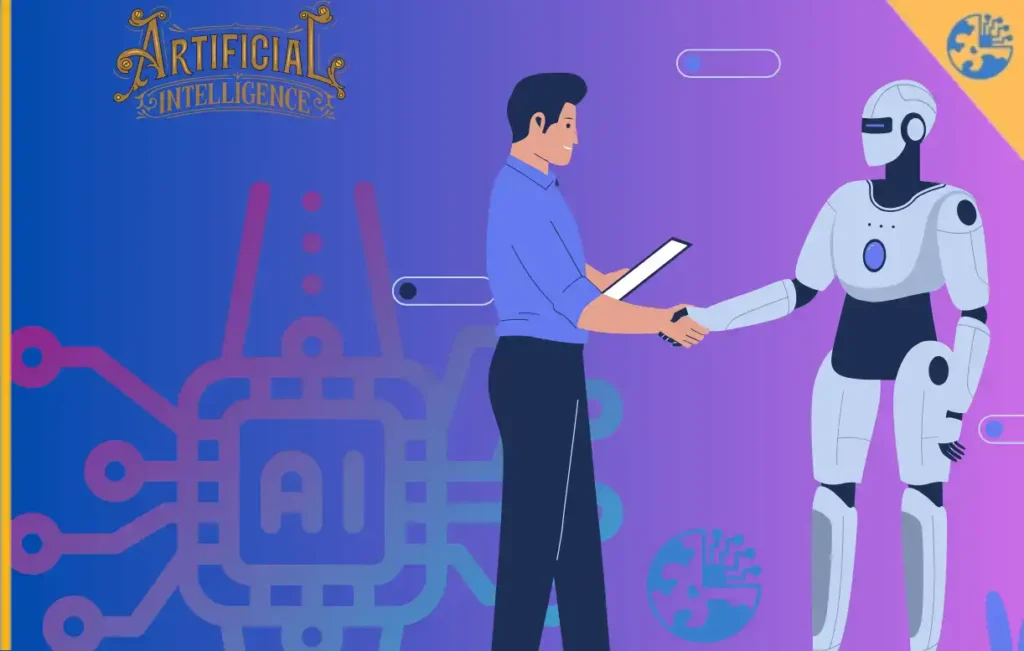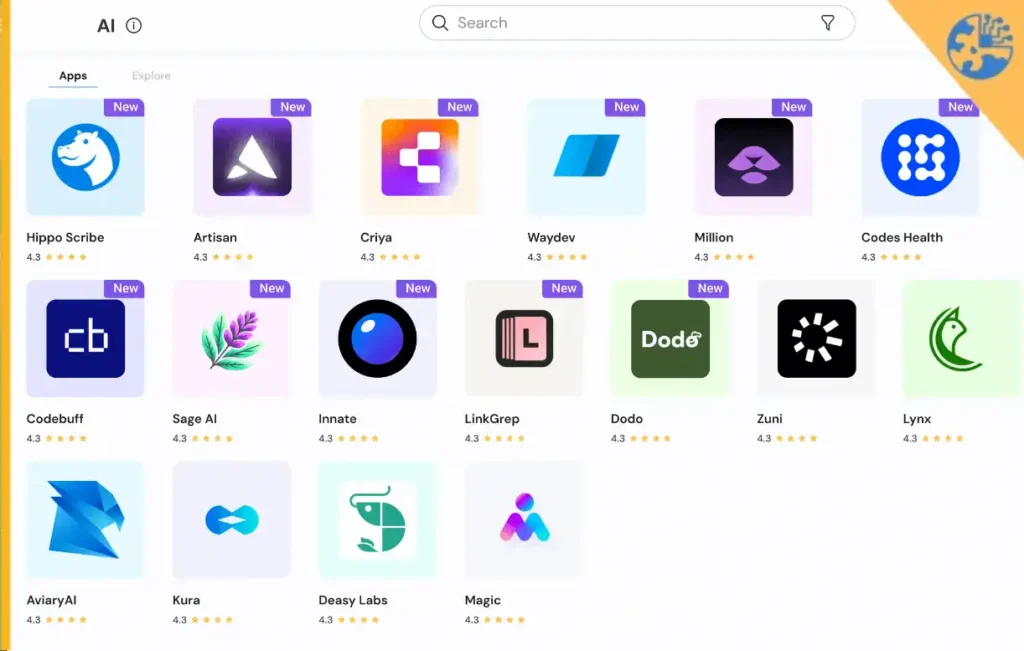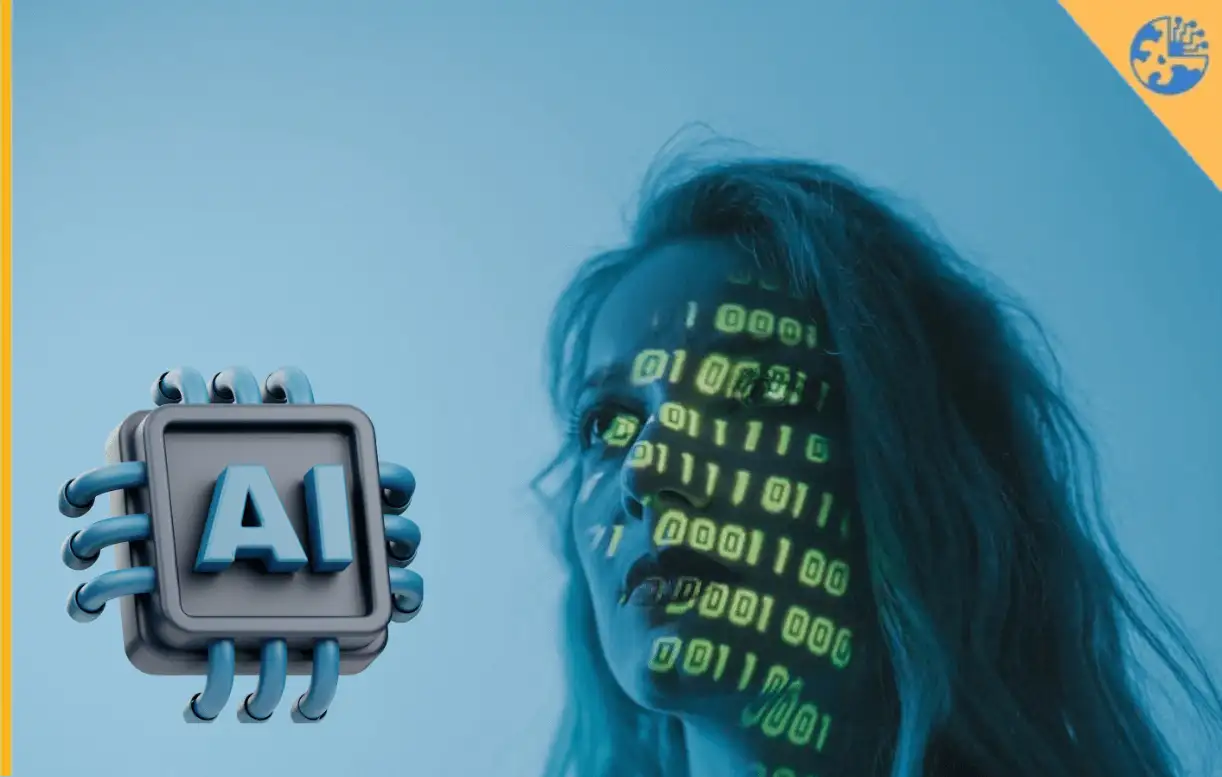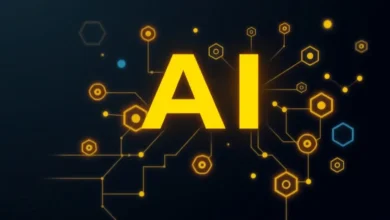Have you ever thought about introduction to artificial intelligence (AI) and how is part of your daily life? It suggests what videos to watch and what to buy online. But, are you ready for a world where AI might change your job in the next ten years? This guide will help you understand AI and its basics.
Chatbots are set to grow into a $2.6 billion market by 2024. AI’s ability to create content is shown in OpenAI’s GPT-3, with 175 billion parameters. AI is everywhere, from healthcare to tech, and is expected to grow fast.

This article about introduction to artificial intelligence will help you understand AI better. It’s perfect for those looking to advance their careers or just curious about AI. It’s your entry into the exciting world of AI.
Table Of Contents
- 1 Understanding the Basics of AI
- 2 Introduction to Artificial Intelligence
- 3 Exploring the Various Types of AI
- 4 Machine Learning and Its Importance in AI
- 5 Deep Learning: A Specialized AI Function
- 6 Neural Networks: Connecting the Dots
- 7 Natural Language Processing in AI
- 8 AI in Robotics: Creating Autonomous Machines
- 9 The Role of Data in Training AI Systems
- 10 Real-World Applications of AI
- 11 Emerging Trends and the Future of AI
- 12 Conclusion
- 13 FAQ About Introduction To Artificial Intelligence (AI)
- 13.1 What is Artificial Intelligence?
- 13.2 Can you explain the evolution of AI?
- 13.3 What are the key components of AI technologies?
- 13.4 What are narrow AI, general AI, and superintelligent AI?
- 13.5 What’s the difference between reactive machines and limited memory AI?
- 13.6 Why is machine learning important in AI?
- 13.7 How do deep learning and neural networks power advanced AI applications?
- 13.8 How does AI use Natural Language Processing?
- 13.9 How is AI utilized in robotics in this introduction to artificial intelligence?
- 13.10 What role does data play in training AI systems?
- 13.11 How is AI transforming healthcare and business?
- 13.12 What are the latest trends in AI, and why are ethical considerations important?
Key Takeaways
- Grasp the fundamental concepts behind what is artificial intelligence in this introduction to artificial intelligence and its current scope.
- Explore the statistics and projections that underscore AI’s exponential growth and integration into various industries.
- Acquire actionable insights on how you can adapt and find opportunities in a landscape increasingly dominated by AI.
- Understand the relevance of machine learning, NLP, and other AI technologies that are shaping the future.
- Learn about the ethical considerations and personal impacts of AI on privacy, jobs, and societal norms.
- Discover the role of data and the significance of training AI systems to enhance their efficiency and accuracy.
- Prepare for the emerging trends in AI that you must watch out for in the near future.
Understanding the Basics of AI
Welcome to the world of Artificial Intelligence and learn this introduction to artificial intelligence, where machines do things we thought only humans could. You’ll learn about the ai fundamentals and ai basics as you explore. These technologies can do simple tasks and even make complex decisions.
Defining AI in this introduction to artificial intelligence
In this introduction to artificial intelligence, AI is about making machines think like us. It uses special algorithms in computers to do tasks that need human smarts.
These tasks about introduction to artificial intelligence include learning, solving problems, and understanding language.
The Evolution and History of AI
AI started in the 1950s with the dream of making machines smart like us. Since then, it has grown with new ai technologies. Now, we have things like neural networks and machine learning.
Key Components of AI Technologies
- Machine Learning: Machine learning is at the core of AI. It lets computers learn from data without being programmed. This is key for AI to work well in many areas.
- Neural Networks: Neural networks are like the brain of AI. They try to find patterns in data, just like our brains do.
- Natural Language Processing (NLP): NLP lets computers understand and use human language. This is used for things like translating and summarizing text.
- Data Analysis: AI needs lots of data to make smart choices. This part of AI looks at big data to find useful patterns and insights.
As you learn more about these AI parts, you’ll understand how they help in areas like healthcare and finance. Your journey into ai principles is just starting. Every step brings new chances to see AI in action.
Introduction to Artificial Intelligence
Starting your journey into this introduction to artificial intelligence (AI) is exciting. AI is changing many areas of life and work. It’s a key technology that helps us understand and use lots of data.
First, let’s look at what AI is in this post about introduction to artificial intelligence . It uses complex systems to think like humans.
In this introduction to artificial intelligence, AI is a big field with many chances for learning and growth. It’s also changing the job market, offering new career paths.
As AI gets better, learning from ai tutorials is very helpful. These guides cover the basics and advanced topics. They help us see how AI works in real life.
| Feature | Details |
|---|---|
| Generative AI (Gen AI) | Creates content like text, images, and videos on its own. It goes through training, tuning, and generation phases. |
| Deep Learning | Uses many-layered neural networks for learning without supervision. It’s key for tasks like understanding language and seeing images. |
| Online AI Course Options | There are self-guided ($185) and instructor-led ($170) courses. They last 6 weeks or 3 months, with 24 hours of learning and online chats. |
To get the most from AI, knowing its basics is important. This includes machine learning, neural networks, and generative AI. This knowledge helps us see how AI is changing fields like healthcare and finance.
Learning AI doesn’t have to be hard. Many tutorials are out there to help. They cover everything from the basics to advanced AI topics. Starting with AI could be a big step towards a future-proof career.
Exploring the Various Types of AI
In introduction to artificial intelligence and in today’s world, knowing about AI types is key. It shows us what AI can do and what it can’t.
In this post about introduction to artificial intelligence and From making our daily lives easier with narrow AI to dreaming of superintelligent AI, AI’s possibilities are endless.
Let’s explore these AI types and see how they differ in what they can do and how they’re used.
Understanding Narrow AI, General AI, and Superintelligent AI
In this this introduction to artificial intelligence, they are:
Narrow AI, or Artificial Narrow Intelligence, is the most common AI today. It’s made to do specific jobs like translate languages or drive cars. For instance, robots with Narrow AI in farming can do tasks like pruning and seeding very well.

General AI is still just an idea. It would be as smart as a human, able to do any thinking task. Superintelligent AI would be even smarter, smarter than the smartest humans in many areas. Even though General AI and Superintelligent AI are still ideas, people are very interested in what they could do.
Differences Between Reactive Machines and Limited Memory AI
Reactive Machines are the simplest AI. They use a set rule to react to situations, without remembering the past. IBM’s Deep Blue, which beat Garry Kasparov in chess, is an example. It only used current data to make moves.
Limited Memory AI can remember recent events to make decisions. It’s more advanced, changing its actions based on new information. Self-driving cars are a great example. They adjust to the road by using both current and past data.
| Type of AI | Description | Examples |
|---|---|---|
| Narrow AI | AI systems that are trained to perform a single or limited task. | Voice recognition systems, AI in agriculture robots |
| General AI | Theoretical AI systems that could perform any intellectual task that a human being can. | – |
| Superintelligent AI | An advanced form of AI that surpasses human intelligence and capabilities. | – |
| Reactive Machines | AI that does not store memories or past experiences to influence decisions. | IBM Deep Blue |
| Limited Memory AI | AI capable of using past experiences to make current decisions. | Autonomous vehicles |
Machine Learning and Its Importance in AI
Exploring Artificial Intelligence (AI) from this introduction to artificial intelligence, starts with a good machine learning introduction.
Machine learning is a key part of AI that lets systems learn and get better on their own. This part explains the machine learning fundamentals and why it’s crucial for AI’s growth.
Understanding machine learning means knowing its basic parts. It’s about algorithms and models in this introduction to artificial intelligence, that mimic how we learn.
The core of machine learning basics is the model. It uses algorithms to go through data and learn from it. This includes training and testing phases to improve and check its performance.
- Recommender Systems: Machine learning helps find your next favorite song or movie on streaming services.
- Speech Recognition: It makes digital assistants better at understanding what you say.
- Fraud Detection: In banking, it spots and stops fraud by analyzing transactions.
Machine learning isn’t just for tech experts. It’s used in many areas to make things more efficient. For example and this introduction to artificial intelligence, it helps in manufacturing and in managing energy in buildings. As it grows, it automates complex tasks and brings new ideas to different fields.
In healthcare, machine learning helps analyze big data for early diagnosis and tailored treatments. It also plays a big role in cybersecurity by spotting new threats and keeping data safe from attacks.
Grasping machine learning’s wide reach is key to using AI well. As AI keeps improving, machine learning’s role becomes even more important. It’s a key part of making new technologies and making things work better.
Deep Learning: A Specialized AI Function
Deep learning is a key part of introduction to artificial intelligence. It uses complex structures called neural networks. These networks are like the human brain, learning from lots of data.
How Deep Learning Powers Advanced AI Applications
In this article about introduction to artificial intelligence, Deep learning is crucial for advanced AI. It uses many layers of neural networks to analyze data deeply.
So, in this post about introduction to artificial intelligence, Deep learning is key for tasks like speech recognition and making decisions on its own.
Neural Networks and Their Structure
Neural networks have a layered structure. They have an input layer, hidden layers, and an output layer. Each layer has nodes that pass signals to each other.
These signals help the network learn and improve. It does this by adjusting the connections between nodes. This process is called backpropagation.
Graphical processing units (GPUs) are important for deep learning. They help the network learn quickly by doing complex math fast.
| Year | Significant Deep Learning Milestones |
|---|---|
| 2006 | Reemergence of neural networks research by Hinton et al., marking the modern era of deep learning. |
| 2007 | Introduction of CUDA by Nvidia, democratizing access to powerful GPUs for deep learning. |
| 2009-2012 | Surge in deep learning popularity due to successful research papers and availability of vast data sets. |
| 2019 | Focus shifts towards making deep learning models more interpretable, predictable, and reliable. |
Learning about deep learning helps us understand modern AI. It shows how deep learning changes many fields, like healthcare and car tech.
Neural Networks: Connecting the Dots
Starting your journey to understanding neural networks is like figuring out how the brain works in a digital world. From this introduction to artificial intelligence, At its heart, every neural network has an Input Layer, Hidden Layers, and an Output Layer. These layers are linked by nodes or neurons, each crucial for processing data.
In the neural networks explained section, we focus on its structure. The Input Layer gets the first data, like our senses do. The Hidden Layers, the ‘brain’ of the network, do the complex work. The Output Layer shows the result, like a decision or reaction.
Neural networks can do simple tasks like linear regression or complex ones like image recognition. They use activation functions and optimizers to improve. These elements add non-linearity and help the model get better through gradient optimization.
In the neural networks tutorial, it’s key to know about loss functions and optimizers. For example, Mean Squared Error (MSE) helps in finding how far the model’s guesses are from real results. It guides the model to get closer to the truth.
Here’s a detailed table showing different neural network parts and what they do:
| Component | Description | Common Use-Cases |
|---|---|---|
| Input Layer | Accepts initial data | Receives raw input like images, text |
| Hidden Layers | Processes data through neurons | Pattern recognition and data classification |
| Output Layer | Delivers final output | Provides decisions, classifications |
| Activation Functions | Determines neurons’ activation | Helps in non-linear learning |
| Optimizers | Adjusts model parameters | Improves model performance during training |
| Loss Functions | Measures deviations of predictions | Used in backpropagation to reduce errors |
This neural networks overview shows these architectures are not just cool tech. They’re key to many AI applications.
Natural Language Processing in AI
To understanding this introduction to artificial intelligence, Natural Language Processing (NLP) is a key part of introduction to artificial intelligence. It uses different strategies and natural language processing fundamentals to let machines understand and use human language. This way, AI models can have a real conversation with us, not just follow commands.
How AI Understands and Generates Human Language
To understand natural language processing basics, we need to look at two main parts: Natural Language Understanding (NLU) and Natural Language Generation (NLG). NLU lets computers understand human language, like how we speak or write. It turns everyday language into data that computers can work with.
On the other hand, NLG lets machines create text based on that data. This makes a complete cycle in NLP concepts. To get better at language, these processes use advanced models like neural networks. In this introduction to artificial intelligence, These models learn from lots of text data.
Applications of NLP in Everyday Technologies
In this introduction to artificial intelligence, NLP is used in many ways in our daily lives. For example, chatbots in stores can answer simple questions or help with problems. This frees up human staff for more complex issues.
In healthcare, NLP helps doctors understand electronic health records better, leading to more precise treatments.
Tools like Grammarly or Microsoft Word also use NLP to check grammar and spelling. This helps users write more clearly and professionally. NLP is also behind machine translation, like Google Translate, and analyzing feelings in social media posts to understand what people think.
By using NLP, companies can do tasks faster and get insights from data they collect. This makes their operations more informed and responsive. It’s a big step forward in natural language processing fundamentals.
AI in Robotics: Creating Autonomous Machines
In introduction to artificial intelligence, the AI is changing robotics in big ways. It’s not just making robots better. It’s making them fully autonomous.
This mix of robotics and AI lets robots do more than just follow rules. They can see, decide, and learn, thanks to AI and robotics.
Robots with AI can handle lots of data to get better with each try. They’re getting more precise and can work in different places. This is especially useful in places like factories and warehouses.
AI makes robots better at certain tasks through advanced learning:
- Robots can now understand what’s around them, find objects, and follow things. This lets them interact with their world in new ways.
- Thanks to AI, robots can do complex things like pick up objects carefully, recognize things, and move on their own.
- As AI and robotics grow, robots can make better choices. This means they can do their jobs more accurately and with less help.
The robotics in AI market is growing fast. This shows how AI is becoming a big part of robots. It’s changing many areas, making things smarter and more flexible.
| Feature | Impact of AI in Robotics |
|---|---|
| Object Manipulation | Robots are now more precise and accurate. This cuts down on mistakes in work places. |
| Autonomous Navigation | Robots can now avoid obstacles better. This is key in places like warehouses and factories. |
| Data Processing | Robots can look at lots of data from sensors and cameras. This helps them learn new things fast. |
| Predictive Maintenance | AI helps predict when machines might break down. This saves time and money, like with IBM’s Watson IoT. |
| Market Growth | The market is expected to grow a lot. This shows how much we’re relying on AI and robotics in work and business. |
Understanding this shows how robotics technology and AI together change what machines can do. As we keep exploring, the role of AI in robotics will only get bigger. It will shape how industries change to meet new needs.
The Role of Data in Training AI Systems
In the fast-changing world of introduction to artificial intelligence, the quality and variety of data for AI are key. Knowing how AI training data affects machine learning algorithms is vital. It helps us use AI’s power to its fullest.
Collecting Data for AI Training
Every piece of data for AI can change how machines learn and decide. We collect lots of data from different places. This data helps machines learn from patterns we can’t see easily.
From everyday business to complex simulations, the data used is wide-ranging. It’s all about making AI systems better.
| Key Activity | Description | Impact on AI |
|---|---|---|
| Data Collection | Gathering raw data from multiple sources | Forms the foundational layer of AI systems |
| Data Cleaning | Removing inaccuracies and preparing data | Enhances model accuracy by refining input data |
| Data Analysis | Identifying patterns and anomalies | Drives the strategic direction of model training |
| Data Visualization | Representing data visually to pinpoint trends | Assists in quick interpretation and decision-making |
Challenges and Considerations in Data Collection
Getting good data for AI is hard. We need lots of data that’s relevant and fair. This is because machine learning algorithms rely on the data’s quality.
Privacy, ethics, and security are also big concerns. They affect how we collect and use data. Plus, AI models need to keep getting better, which means we must always improve our data strategies.
Using strong data collection and analysis can make AI solutions much better. By grasping these points, we can better explore the complex but exciting world of introduction to artificial intelligence.
Real-World Applications of AI
In introduction to artificial intelligence, AI is changing many industries for the better. It’s making things more efficient and opening up new opportunities.
In this introduction to artificial intelligence, AI is making healthcare better and business operations smoother. Let’s look at how AI is impacting these areas.
introduction to artificial intelligence in Healthcare: Improving Diagnosis and Treatment
AI is changing healthcare by making diagnoses more accurate and treatments more personalized. It can look at huge amounts of medical data quickly. This helps find diseases early and diagnose them correctly.
AI is also great at looking at medical images to find problems fast. This makes diagnosis quicker and more accurate. It also helps doctors adjust treatments based on how patients are doing.
introduction to artificial intelligence in Business: Transforming Operations and Customer Service
In this introduction to artificial intelligence, AI in business is about making smarter choices and better interactions. It’s especially good at improving customer service and making operations more efficient. AI helps businesses understand what customers want, making shopping more personal.

Also in this introduction to artificial intelligence, AI helps with customer service by using chatbots to answer questions.
This makes things faster and lets humans focus on more complex issues. In operations, AI helps with supply chains and predicts when things might break down.
So, from this introduction to artificial intelligence, this saves time and boosts productivity.
| Industry | AI Application | Benefit |
|---|---|---|
| Healthcare | Medical Image Analysis | Enhanced diagnostic accuracy |
| Business | Customer Behavior Analysis | Personalized customer experiences |
| Healthcare | Real-Time Treatment Monitoring | Personalized treatment adjustments |
| Business | AI-powered Chatbots | Improved customer service efficiency |
AI’s impact is clear in how it’s being used. It’s making healthcare more precise and business interactions better. AI is a key tool in today’s digital world.
Emerging Trends and the Future of AI
As we look ahead, new advancements in AI are changing the game in many areas. It’s important to grasp these trends, the basics of cognitive computing, and the ethics of AI. This knowledge is vital for both experts and hobbyists.
Advancements in AI Technology
AI is growing fast, with 42% of big businesses using it, says a 2023 IBM survey. Also, 38% of companies are now using generative AI in their work. This shows big changes in how businesses work and create new ideas.
In introduction to artificial intelligence and just for example, In healthcare, AI is helping diagnose diseases from wearable data. In finance, AI is being used to manage equity funds.
These examples show how AI can speed up innovation, bringing decades of progress in just a few years.
Ethical Considerations and Regulation of AI
In this introduction to artificial intelligence AI brings great power, and with it, big responsibilities. Ethical issues and regulation of AI are key to a future where technology is used wisely. The EU’s AI Act is a step towards making AI development more careful and inclusive.
AI’s impact on jobs and privacy is a topic of much debate. Yet, nearly one-third of workers think AI could do about 30% of their tasks. This shows both the benefits and challenges AI brings to work.
| Industry | % of Businesses Currently Using AI | % Considering AI Integration |
|---|---|---|
| General Enterprises | 42% | 40% |
| Healthcare | Data Not Specific | Data Not Specific |
| Finance | Data Not Specific | Data Not Specific |
| Manufacturing | Data Not Specific | Data Not Specific |
The table shows how different industries are using AI. It shows a lot of interest in using AI’s abilities. As you explore these AI trends, staying up-to-date will help you understand and contribute to AI’s future.
Conclusion
As we finish this beginner’s guide Introduction to artificial intelligence, we see AI as more than tech. It’s a key part of our future. You’ve learned about AI’s complexity and why knowing it is crucial.
AI changes how we make decisions and learn. It’s changing industries and how we think about ethics and laws. Governments and schools are preparing for an AI world, readying the next generation.
AI does more than just machines can do. It changes healthcare, transport, and education. AI’s advancements let machines do tasks as well as humans, opening new doors for innovation.
But, with AI’s power comes big responsibility. We must talk about ethics and risks. We need to make sure AI helps us, not replaces us.
The future of AI is exciting but also careful. We’re using AI more in our lives. We see its benefits and the need to talk about privacy and jobs.
This guide has given you a strong base for AI. It prepares you to help shape AI’s future. The knowledge you’ve gained is key to making a difference in this field.
FAQ About Introduction To Artificial Intelligence (AI)
What is Artificial Intelligence?
Artificial Intelligence, or AI, is when machines do things that humans do. This includes learning, thinking, and fixing mistakes. It’s about making machines smart like us.
Can you explain the evolution of AI?
AI started with old stories of mechanical men. But it really began in the 1950s. Since then, computers got better, and so did AI.
What are the key components of AI technologies?
AI has Machine Learning, Neural Networks, and more. These help computers learn, understand language, and make choices.
What are narrow AI, general AI, and superintelligent AI?
Narrow AI does one thing well. General AI can do anything like a human. Superintelligent AI is smarter than us, but it’s still a dream.
What’s the difference between reactive machines and limited memory AI?
Reactive machines just react to situations. Limited memory AI learns from past experiences. This makes it smarter over time.
Why is machine learning important in AI?
Machine Learning lets AI get better without being told how. It’s how AI adapts and uses lots of data.
How do deep learning and neural networks power advanced AI applications?
Deep Learning uses complex networks to understand data. This helps AI do things like recognize speech and images. It’s key for self-driving cars and more.
How does AI use Natural Language Processing?
AI uses NLP to talk to us like a person. It understands and makes language. This is how chatbots and voice assistants work.
How is AI utilized in robotics in this introduction to artificial intelligence?
AI makes robots smart. They can do things on their own, like making things or helping with personal care. They learn and adapt.
What role does data play in training AI systems?
Data teaches AI how the world works. It helps AI learn and get better. This is like how we learn from our experiences.
How is AI transforming healthcare and business?
AI helps healthcare by making diagnoses better and personalizing treatment. In business, it automates tasks and gives insights for better decisions.
What are the latest trends in AI, and why are ethical considerations important?
New trends include cognitive computing and AI in devices. Ethics are key because AI must be fair and transparent. This prevents misuse and ensures it helps everyone.











